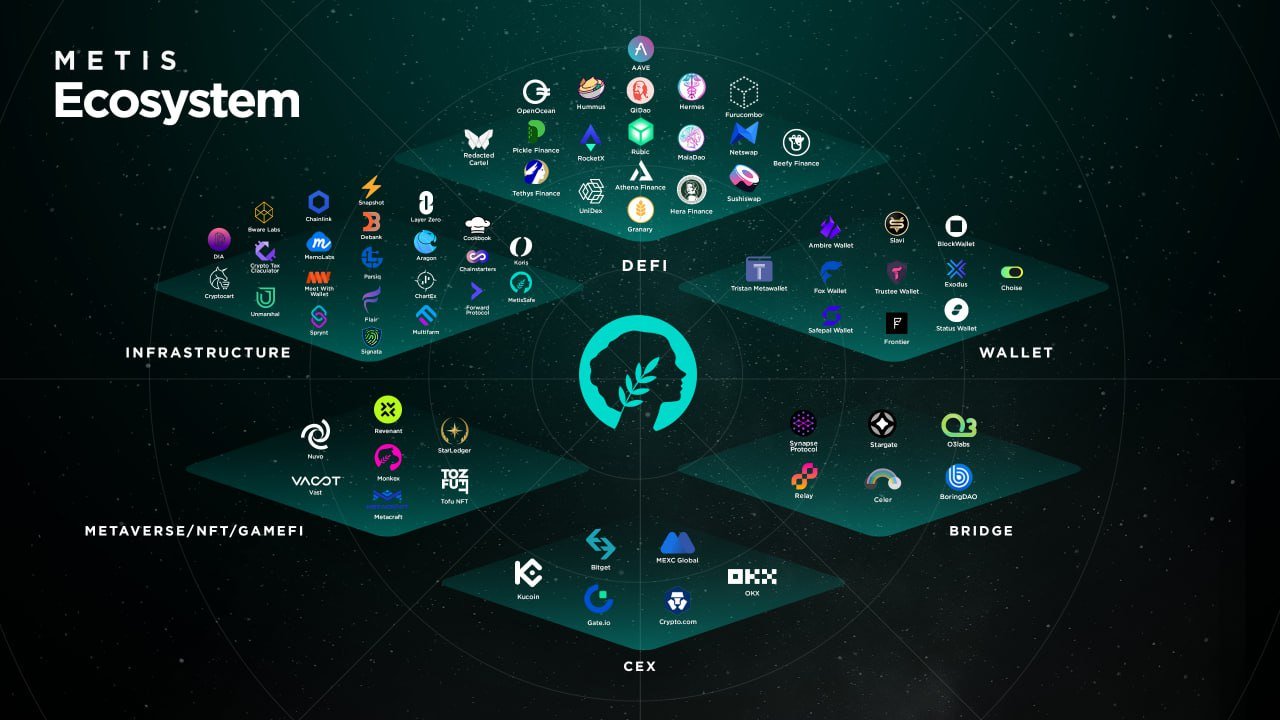Metis Is Betting on Low Fees and No Waiting Periods to Gain in Crowded Layer 2 Market
Metis is working on the pain points of Layer 2 protocols to help it gain market share

It’s getting crowded out there in Layer 2 land. Polygon, Optimism, Arbitum, Starknet – the list goes on. So one of the newer L2s, Metis, is hoping to gain on its competition by offering low trading fees and eliminating withdrawal waiting periods.
High gas and transaction costs have hampered Ethereum’s ability to go mainstream, among other issues. MetisDAO Co-Founder Elena Sinelnikova, along with partners that include Vitalik Buterin's mom Natalia Ameline, are aiming squarely at user’s pocketbooks for an advantage.
"The fees of all the transactions in the batch are split between everyone, which makes it cheap,” Sinelnikova told me in an interview at the Blockchain Futurist Conference in Toronto. “Since you're processing these transactions in batches, this also speeds up the process. Metis layer-2 transaction cost is around 1 cent, which makes it the cheapest Layer 2 in the space."
Layer 2 is a technology that’s built on top of blockchains. MetisDAO Foundation, the organization behind the Ethereum L2 protocol Metis, is developing an optimistic rollup that bundles transactions to make them faster and cheaper to process within a decentralized platform. Metis, which became active in 2021, says transaction costs for cryptocurrency swaps are 3 cents. In addition, its Transaction speed is 2,000 Transactions Per Second (TPS), but can be scaled up or down based on network load or need.
On Ethereum, transaction costs depend on the demand within the network. ETH validators pick up transactions based on the fees they can earn.
"When work is hectic, only costly transactions get approved, so the transaction fee grows,” Sinelnikova said. “It can grow to $200, but some people even pay up to a million dollars for the fees in a single transaction."
Eliminating the 7-day Withdrawal Window
Beyond bundling transactions to make them cheaper, Metis is developing a technology that combines Optimistic and Zero-Knowledge rollups to eliminate the 7-day withdrawal window. Metis' ZKM is a plug-in that proves whether transactions are correct or incorrect.
During an optimistic rollup, transactions are processed in batches, but there is a 7-day wait time for transactions to become true, approved and accurate.
"People can withdraw money from layer-2 to layer-1 only when the 7-day withdrawal window passes for security reasons. That's why it's called 'optimistic rollup' because optimistically, these transactions are true until proven otherwise during the 7-day fraud-proof window." Sinelnikova said.
If proof of fraud is confirmed, perpetrators get fined, and the whole batch gets rolled back. With ZKM, the 7-day withdrawal window is eliminated.
"When the transaction batch is committed, you can take any transaction and pass it through the ZKM technology to create proof for the transaction immediately,” Sinelnikova continued. “You can withdraw this transaction without waiting seven days.”
But beyond that, ZKM's goal is to make Ethereum the universal settlement layer for all other blockchains. That means the rollup will be compatible with other Layer 1s like Avalanche, Celo, Fantom Solana and BNB Chain.
Securing Bridges
Cross-functional bridges enable the transfer of assets and data between distinct blockchains. Still, they've earned a reputation for being a weak security link vulnerable to attacks.
According to Sinelnikova, hackers love bridges because of the large pool of money in them, much like how bank robbers target armored cars. So far, blockchain analysis firm Chainanalysis found DeFi protocols lost $3.1 billion from hacking incidents. Of this,$2.1 billion, or 68 percent, was caused by fallen bridges.
"The ZKM can help secure the bridge,” Sinelnikova said. “By settling and creating the proof of transactions from any other blockchain to Ethereum, you can see that this token was burned and can be safely recreated without pooling money that hackers can exploit."
Building a Decentralized Infrastructure for Web3
Another way Metis hopes to differentiate itself from other L2s is by working to decentralize sequencers, which they hope will mean its network will never go down.
The core difference of Metis’s L2 from popular L2 solutions like Optimism and Arbitum, Sinelnikova said, is its sole purpose of creating a decentralized environment. “All Layer 2s are centralized right now, including Arbitrum and Optimism,” she said. “It means every Layer 2 has only one sequencer that is processing transactions.”
Having a centralized network is risky because when an incident occurs within the company, transactions could stop and withdrawals would be impossible.
“Sequencers will be controlled by the community,” she said, and “will allow for an unlimited number of sequencers in different parts of the world. This level of decentralization will allow 100 percent availability of the network and ultimate safety of the funds.”
The Metis support team will also be removing themselves from responsibility for controlling the protocol, specifically during the saving process for transactions, Sinelnikova said. "If something happens to our company, to our team, it doesn't matter, its network would still be alive without the core team," she explained.
While the L2 field may be crowded, Metis is betting a decentralized environment will entice businesses to collaborate instead of working in a vacuum to build everything from scratch.
For entrepreneurs or creators, this could mean access to partners and collaborators within the ecosystem who can provide guidance and funding. "You don't need to struggle to start your startup from scratch,” Sinelnikova said. “That's exactly where our idea came from when we created Metis."

